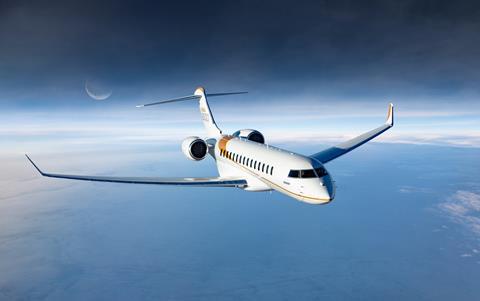Honeywell predicts that business jet manufacturers will deliver 8,500 aircraft worth almost $300 billion over the next 10 years, a figure unchanged since its last forecast in 2022.
However, the 2023 edition of its Global Business Aviation Outlook provides new insight into the dynamics shaping the sector.

Business jet operators are expanding their fleets rapidly and aircraft manufacturers are making progress in hiking production and delivery rates to match demand, the report notes.
But it also highlights a slowing of new orders, a post-pandemic reduction in business aircraft flight activity and a “positive shift toward sustainability”.
“We have seen fleet-expansion rates increase for the third year in a row,” says Honeywell strategy manager Javier Jimenez-Serrano. He says the trend reflects the surge of orders that came during the pandemic, driven partly by demand from first-time buyers.
Honeywell expects manufacturers will deliver 8,500 new business jets, worth an estimated $278 billion, between 2024 and 2033, based on surveys of operators, manufacturers’ production plans and economic analyses.
Of the 8,500 expected deliveries, about 500 will go to new business jet users and 4,000 will take place within five years, Honeywell anticipates.
North American operators will likely receive 64% of jets to be delivered within five years, while those in Europe will take 14%, Asia-Pacific 11%, Middle East 6% and Latin America 5%.
Large-cabin, long-range business jets will account for 69% of all business-jet sales over five years, Honeywell predicts.
“Our industry is on the upswing. Operators are showing confidence with plans to expand their fleets at a faster rate than any time in the previous decade,” says Honeywell president of aftermarket Heath Patrick.
The Covid-19 pandemic prompted aerospace suppliers to slash staff and production, but also triggered a spike in demand for private aircraft.
Manufacturers rushed to ramp up production but struggled due to material and worker shortages.
The sector is still rebounding but has been making real progress: Honeywell expects 2024 deliveries to be 10% above 2023 levels, with the value of those sales expected to jump 13%.
While deliveries are up, Honeywell notes that following pandemic highs, “the pace of new orders for jets has slowed”. So has demand for business aviation travel.
Honeywell predicts full-year 2023 business aviation flight activity will be down 4% from 2022 levels due to “factors such as inflation and the resumption of commercial air service on key routes”. But flight activity this year will still be about 10% above pre-pandemic 2019, Jimenez-Serrano notes.
“It is anticipated that flight activity will stabilise in 2024 and return to growth in 2025,” Honeywell says.
Jimenez-Serrano says used jets remain in short supply and that purchase rates for those aircraft have not significantly changed since last year.
What has changed is aircraft operators’ interest in reducing their carbon output.
Honeywell’s survey has for several years included questions on sustainability. The 2021 survey revealed that two-thirds of operators had no plans to cut emissions, falling to 40% in 2022 and to 33% this year.
“It’s flipped,” says Jimenez-Serrano. “People are aware of the options… People are starting to plan what they are going to do.”


























